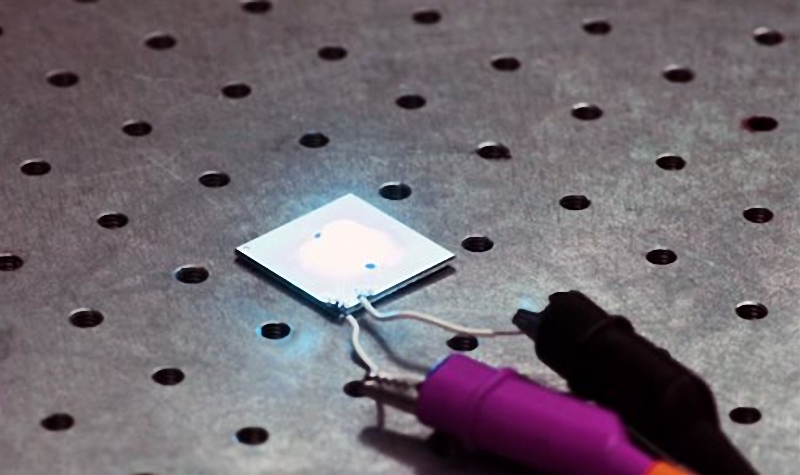NEWS
NEWS
Turkish scientists have found a newest solution to achieve more luminous efficiency per watt for led
20-07-2018
A Turkish research team announces that it has found on a latest solution to develop new nanomaterial-based white LEDs that achieves higher luminous efficiency of 105 lumens per watt in Optica.
The new approach achieves high efficiency LEDs by combining blue LEDs with flexible lenses filled with quantum dots, a solution of nano-sized semiconductor particles. Light from the blue LED causes the quantum dots to emit green and red, which combines with the blue emission to create white light.

The new LEDs were made by filling the space between a polymer lens and LED chip with a solution of quantum dots that were synthesized by mixing cadmium, selenium, zinc and sulfur at high temperatures. The lens were made by a type of silicone as its elasticity allowed researchers to thrust solutions into the lens without leaking out, and the material’s transparency enabled the necessary light transmission.
Traditionally, white light LEDs are created by adding phosphor to blue LEDs and it is difficult to tune the properties of phosphors to generate white light. According to the research, quantum dots emit only in a narrow portion of the spectrum, combining the feature with blue LEDs makes it possible to produce white light with precise color temperatures and optical properties. The emitting color of quantum dots is also easy to change by increasing the size of the semiconductor particle. Besides, the new LEDs could reach efficiencies over 200 lumens per watt with further development.
Sedat Nizamoglu, the research leader from Koç University, Turkey, said, "Efficient LEDs have strong potential for saving energy and protecting the earth. Replacing conventional lighting sources with LEDs with an efficiency of 200 lumens per watt would decrease the global electricity consumed for lighting by more than half. That reduction is equal to the electricity created by 230 typical 500-megawatt coal plants and would reduce greenhouse gas emissions by 200 million tons." He added, "Quantum dots provide more opportunity for efficient lighting applications."
The scientists will keep working to increase the efficiency of the LEDs by using eco-friendly materials that are cadmium and lead free. They also plan to focus on liquid based white LEDs which are shown to have double the efficiency of LEDs that combine quantum dots in solid firms.
The new approach achieves high efficiency LEDs by combining blue LEDs with flexible lenses filled with quantum dots, a solution of nano-sized semiconductor particles. Light from the blue LED causes the quantum dots to emit green and red, which combines with the blue emission to create white light.

The new LEDs were made by filling the space between a polymer lens and LED chip with a solution of quantum dots that were synthesized by mixing cadmium, selenium, zinc and sulfur at high temperatures. The lens were made by a type of silicone as its elasticity allowed researchers to thrust solutions into the lens without leaking out, and the material’s transparency enabled the necessary light transmission.
Traditionally, white light LEDs are created by adding phosphor to blue LEDs and it is difficult to tune the properties of phosphors to generate white light. According to the research, quantum dots emit only in a narrow portion of the spectrum, combining the feature with blue LEDs makes it possible to produce white light with precise color temperatures and optical properties. The emitting color of quantum dots is also easy to change by increasing the size of the semiconductor particle. Besides, the new LEDs could reach efficiencies over 200 lumens per watt with further development.
Sedat Nizamoglu, the research leader from Koç University, Turkey, said, "Efficient LEDs have strong potential for saving energy and protecting the earth. Replacing conventional lighting sources with LEDs with an efficiency of 200 lumens per watt would decrease the global electricity consumed for lighting by more than half. That reduction is equal to the electricity created by 230 typical 500-megawatt coal plants and would reduce greenhouse gas emissions by 200 million tons." He added, "Quantum dots provide more opportunity for efficient lighting applications."
The scientists will keep working to increase the efficiency of the LEDs by using eco-friendly materials that are cadmium and lead free. They also plan to focus on liquid based white LEDs which are shown to have double the efficiency of LEDs that combine quantum dots in solid firms.


